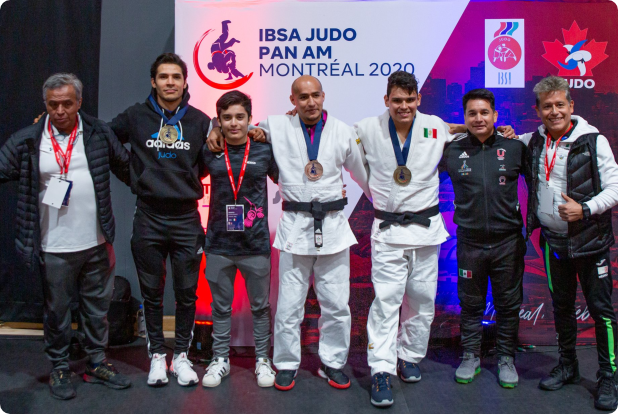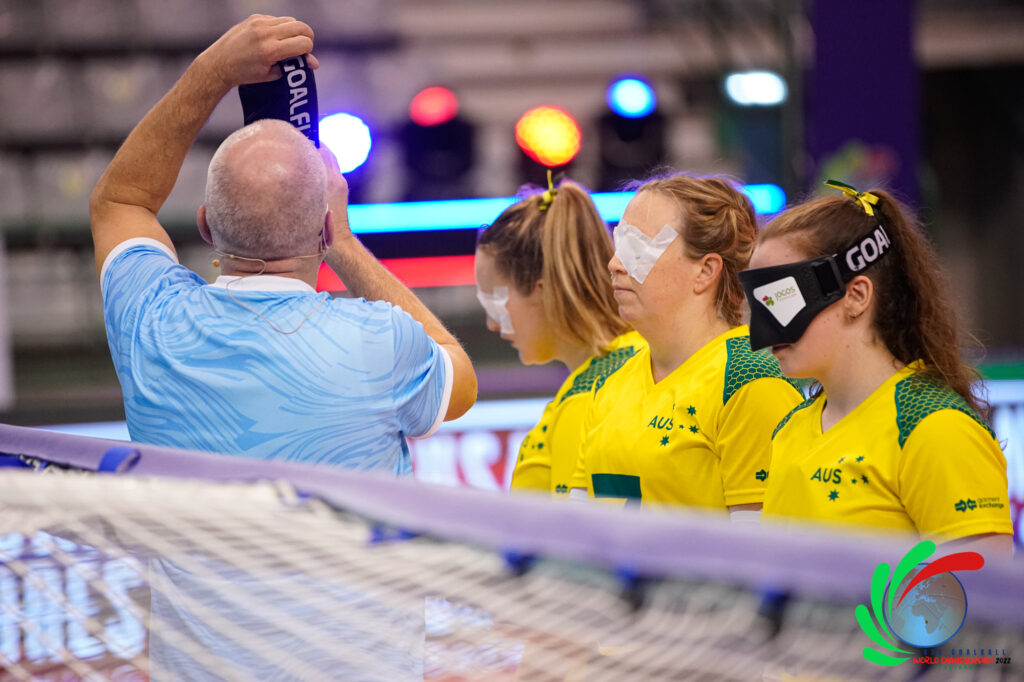For athletes and teams
For athletes and teams
Prior to competing in an IBSA-sanctioned competition all athletes must undergo classification, carried out by an international classification panel.
If you are an athlete, the IBSA member organisation in your country is responsible for arranging classification for you and ensuring that the relevant and correct information is provided to classifiers.
More information about classification, and the official processes, can be found by downloading the IBSA Classification Manual for Members.

Classification Review Requests
A Medical Review Request must be made if a change in the nature or degree of an Athlete’s Impairment results in an improvement or a decrease in the Athlete’s ability to execute the specific tasks and activities required to compete in judo in a manner that is clearly distinguishable from changes attributable to levels of training, fitness and proficiency.
A Medical Review Request must be made by the Athlete’s IBSA Member (together with a €100 fee, non- refundable, a new MDF and any supporting medical documents). The Medical Review Request must explain how and to what extent the Athlete’s Impairment has changed and why it is believed that the Athlete’s ability to execute the specific tasks and activities required in judo has changed. Check out the form here.
It is up to the Heads of classification to accept or not to accept the request of a Medical Review. In the process to accept or refuse it the Heads of classification can consult other international classifiers or other medical experts and specialists. They can also request further medical information From the IBSA member and athlete.
It could take up to two months to review so it is advisable to send the Classification Review Request three months before the competition they wish to participate.

Classification generally takes place before your first event gets underway at a competition. There will be a dedicated room or venue for it. If you need to perform tests, there will be equipment provided.
You are allowed to have one person with you during your classification session. That person must know about your impairment and sport performance. You are also welcome to provide your own translator.
You will be asked to bring a form of identification (e.g. your passport) and to sign a form which gives your permission to be classified.
During the classification appointment you should expect to be asked lots of questions and take part in a series of tests in front of a panel of classifiers. These will include things like visual acuity and/or visual field tests.
The classifiers will also have your medical documentation which they will have reviewed before they see you. The classifiers may take photos or videos of you for education purposes.
A group of classifiers is known as a ‘panel’.
As an athlete it is your responsibility to ensure you are honest with classifiers and complete each test to the best of your ability.
As well as a classification status, athletes will also receive a sport class after they have been classified if you meet the minimum impairment criteria.
For IBSA sports, this will currently either be B1, B2 or B3 for all IBSA sports except judo. Some sports cater for all three classes, others one or two. Judo has two sport classes – J1 and J2. For more information about each sport’s classification, please visit the sports page.
- B1 – These athletes have a very low visual acuity and/ or no light perception.
- B2 – Athletes with a B2 sport class have a higher visual acuity than athletes competing in the B1 sport class and/ or a visual field of less than 5 degrees radius.
- B3 – Athletes with a B3 (or equivalent) sport class have the least severe visual impairment eligible for IBSA sports. They have the highest visual acuity and/or a visual field of less than 20 degrees radius
For more information about classification in judo, visit the IBSA Judo website.
The details provided on this page are only a summary of classification for athletes.
More information about classification, and the official processes, can be found by downloading the IBSA Classification Manual for Members or the IBSA Classification Rules.
After you are classified you will generally be given one of four sport class statuses – Confirmed, Review, Review with a year or Not-Eligible.
Confirmed means that your visual ability is not likely to change over time. This status is assigned to athletes with a permanent, unchangeable condition. You can however still be called to be classified again at any stage.
Review means that you either need to be classified by another panel or you have a condition that changes over time. This status means that you will be classified again.
You may also be given a CNC (Classification Not Completed) status if your diagnosis has not been proven during the classification and through your medical evidence. In such cases, you will be expected to present the results of further diagnostic tests (e.g. electrophysiology; visual fields; computer tomography), before you are next classified.
Once the diagnosis has been verified, further re-evaluation may be necessary in order to verify stability of the condition.
If you are given a Review status you can still compete at the competition you have been classified at. However you must be reassessed before you can compete at another IBSA-sanctioned competition.
You may also be given a Review with a year (for example Review 2020). The year will normally be two or four years away. This means that you must be classified again at your first competition in that year.
You may be given a Review with a year if it is the first time that you have been classified. However, if the panel believes that your eye condition will not change over time, you are given a Confirmed status.
A Not-Eligible status is given to athletes who do not meet the minimum impairment criteria for the sport they are being classified in.
This is only given after an athlete has been assessed by a second panel of classifiers. Both panels must agree.
If an athlete is found Not-Eligible by the first panel an athlete can protest the verdict to the Head Classifier at the competition. Should the protest be accepted, the athlete is sent to the second panel. Should the second panel confirm that the athlete is Not-Eligible, they will not be able to compete at that competition and will have no further opportunity to protest.
The verdict of the second classification panel is final. This means that you will not be able to compete at IBSA sanctioned competitions.
However, athletes with a degenerative condition, but who are assigned a Not-Eligible status, can be classified again at a future date if it can be proved that the athlete’s sight has deteriorated. In this case it is the responsibility of the relevant IBSA member, the National Paralympic Committee or International Federation to request a Classification Review and to provide medical documentation showing a change in the level of your vision.
More information about the process is available in the IBSA Classification Rules.
If you are found to be Not-Eligible under the IBSA classification rules, it is very important to note that classifiers are not saying you do not have a genuine impairment. It is simply that you do not meet the minimum impairment criteria for that sport.